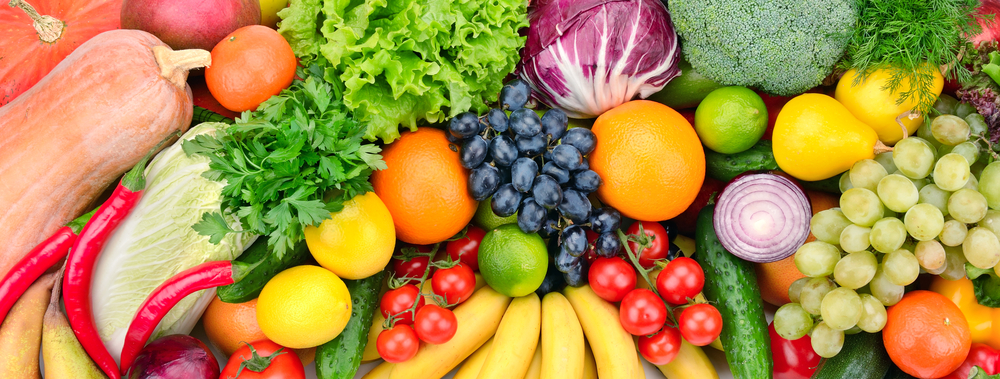
Nutrition in the New Year: 10 Tips to Eat Healthier in 2021
By Lacey Anderson, MS, RD, LDN
With so much nutrition information floating around, it can be tough to figure out the best way to make healthier choices in the New Year. Our advice is to start small and remember the basics of healthy nutrition. Research shows that simple, everyday changes add up to make big impacts on your health. Here are some simple tips for a healthier new year!
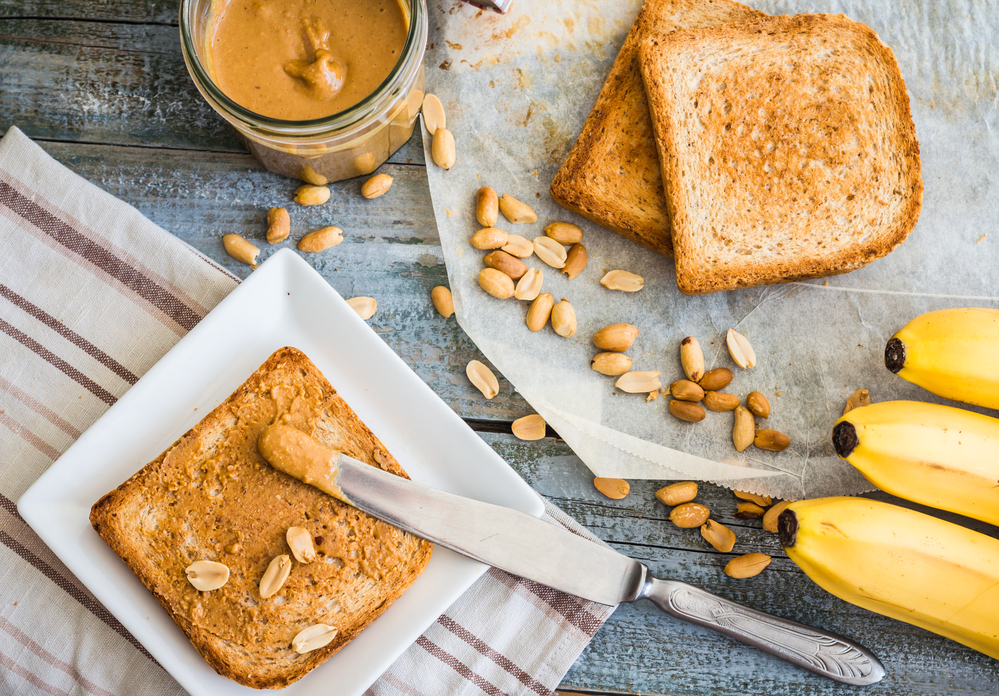
1. Swap white bread for whole-grain bread. Whole grains are full of fiber and healthy carbohydrates that provide lasting energy. When a food is made with a whole grain, that means it includes all parts of the original grain, including a fibrous outer layer, energizing inner layer, and a vitamin and mineral-dense pocket called the germ. Look for the word “whole” as the first ingredient on a nutrition facts label to know if a bread is a whole grain. Food companies get creative with labeling their products: bread labeled “wheat” or “multigrain” is not always a true whole grain, so make sure to double-check the label.
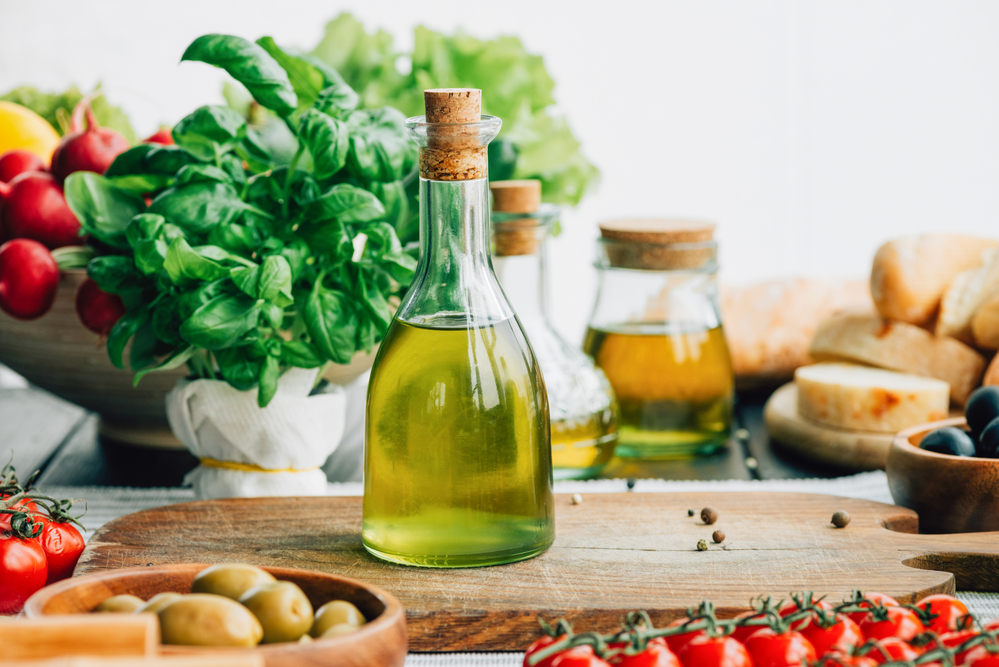 2. Use olive oil instead of butter when cooking. If you are focused on improving your heart health this year, replacing a saturated fat such as butter with an unsaturated fat such as olive oil will go a long way. According to the American Heart Association (AHA), replacing one teaspoon of butter or margarine with olive oil can lower the risk of cardiovascular disease by 5% and coronary heart disease by 7%. According to a study done by the AHA, those who consumed more than half a tablespoon of olive oil each day had a 15% lower risk of having any kind of cardiovascular disease. Olive oil and other unsaturated fats are the best for heart health and can be used during the cooking process or sprinkled on top of a salad or dish before eating.
2. Use olive oil instead of butter when cooking. If you are focused on improving your heart health this year, replacing a saturated fat such as butter with an unsaturated fat such as olive oil will go a long way. According to the American Heart Association (AHA), replacing one teaspoon of butter or margarine with olive oil can lower the risk of cardiovascular disease by 5% and coronary heart disease by 7%. According to a study done by the AHA, those who consumed more than half a tablespoon of olive oil each day had a 15% lower risk of having any kind of cardiovascular disease. Olive oil and other unsaturated fats are the best for heart health and can be used during the cooking process or sprinkled on top of a salad or dish before eating.
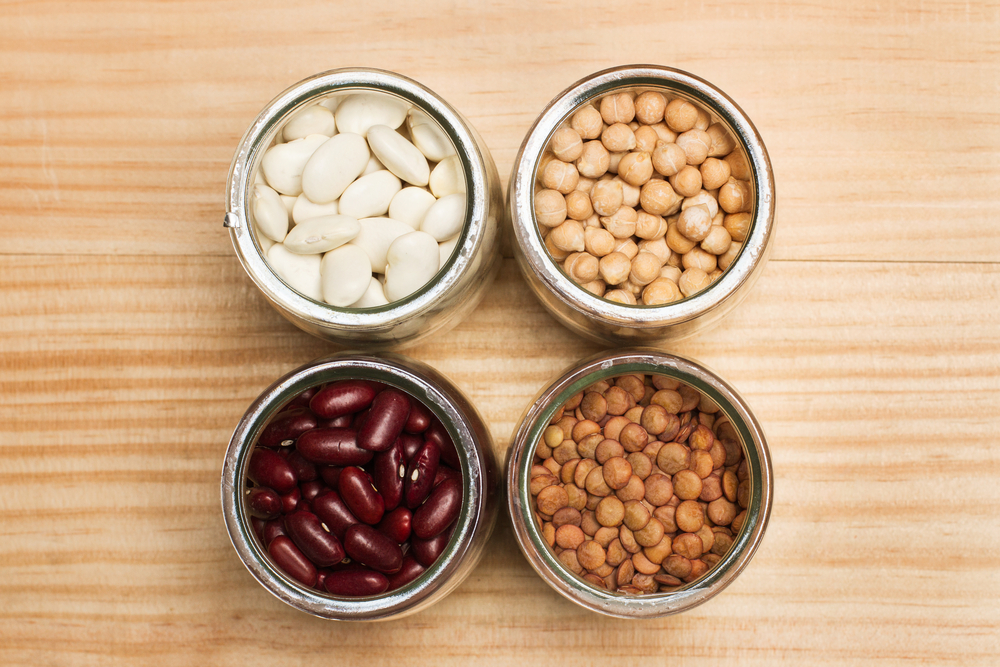 3. Add more beans and legumes into your diet. Beans and legumes, including kidney beans, pinto beans, black beans, garbanzo beans, lentils, and soybeans, are rich in protein, fiber, iron, zinc, potassium, and folate. They provide a lot of protein and fiber, with less fat than other protein sources such as meat. Fiber-filled foods such as beans and legumes are healthy for the digestive system. They help to lower cholesterol in the body, feed the helpful bacteria in your gut, and can help prevent colon cancer. The American Cancer Society recommends getting enough fiber from whole plant foods to reduce the risk of colon cancer. If you are new to beans or legumes, try replacing half of the meat in your recipe with beans!
3. Add more beans and legumes into your diet. Beans and legumes, including kidney beans, pinto beans, black beans, garbanzo beans, lentils, and soybeans, are rich in protein, fiber, iron, zinc, potassium, and folate. They provide a lot of protein and fiber, with less fat than other protein sources such as meat. Fiber-filled foods such as beans and legumes are healthy for the digestive system. They help to lower cholesterol in the body, feed the helpful bacteria in your gut, and can help prevent colon cancer. The American Cancer Society recommends getting enough fiber from whole plant foods to reduce the risk of colon cancer. If you are new to beans or legumes, try replacing half of the meat in your recipe with beans!
 4. Start out your morning with a piece of whole fruit instead of a glass of juice. When eating a whole fruit, the natural sugars are digested slowly because they are accompanied by fiber found in the fruit. Whole fruits such as berries and citrus fruits are extremely nutrient-dense and are full of antioxidants and vitamins. Choosing a whole piece of fruit with a meal or as a snack also helps to sustain your body between meals. Fruit juice, on the other hand, is a highly concentrated version of the fruit, so it is much higher in sugar and lacks fiber. Try a juicy orange, berries, or a banana with breakfast for a more nutrient-dense start to your day.
4. Start out your morning with a piece of whole fruit instead of a glass of juice. When eating a whole fruit, the natural sugars are digested slowly because they are accompanied by fiber found in the fruit. Whole fruits such as berries and citrus fruits are extremely nutrient-dense and are full of antioxidants and vitamins. Choosing a whole piece of fruit with a meal or as a snack also helps to sustain your body between meals. Fruit juice, on the other hand, is a highly concentrated version of the fruit, so it is much higher in sugar and lacks fiber. Try a juicy orange, berries, or a banana with breakfast for a more nutrient-dense start to your day.
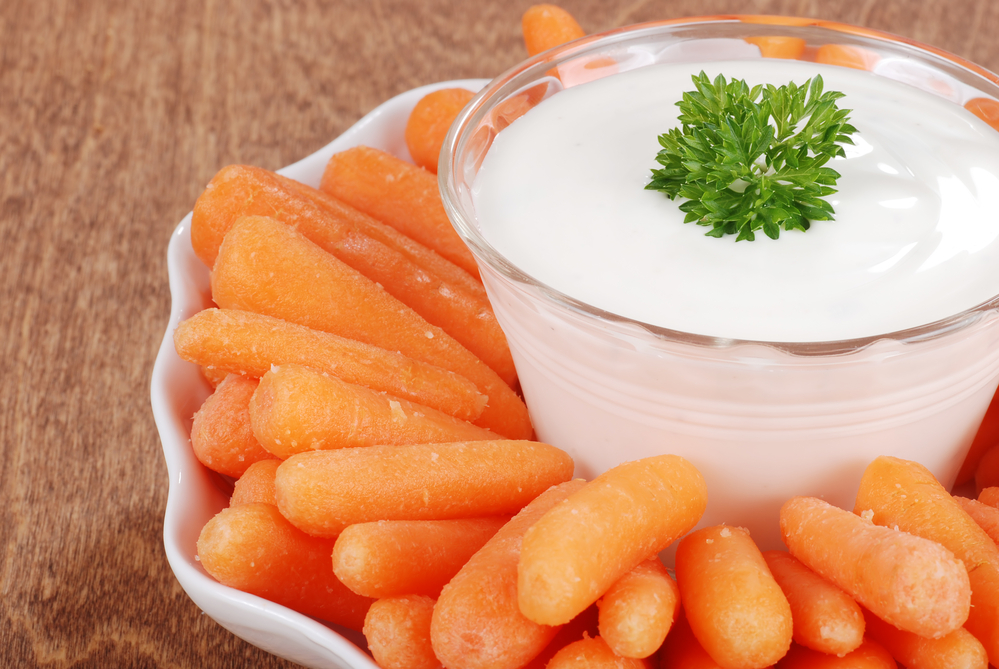 5. Eat more veggies! This one is plain and simple. Adding just one more serving of vegetables into your day will go a long way for your health. Vegetables are nutritional powerhouses that contain many vitamins, minerals, and antioxidants that help to reduce the risk of chronic disease. They are also full of fiber and are very versatile in cooking. The USDA’s dietary guidelines for Americans recommend that adults eat a minimum of five servings of vegetables daily.
5. Eat more veggies! This one is plain and simple. Adding just one more serving of vegetables into your day will go a long way for your health. Vegetables are nutritional powerhouses that contain many vitamins, minerals, and antioxidants that help to reduce the risk of chronic disease. They are also full of fiber and are very versatile in cooking. The USDA’s dietary guidelines for Americans recommend that adults eat a minimum of five servings of vegetables daily.
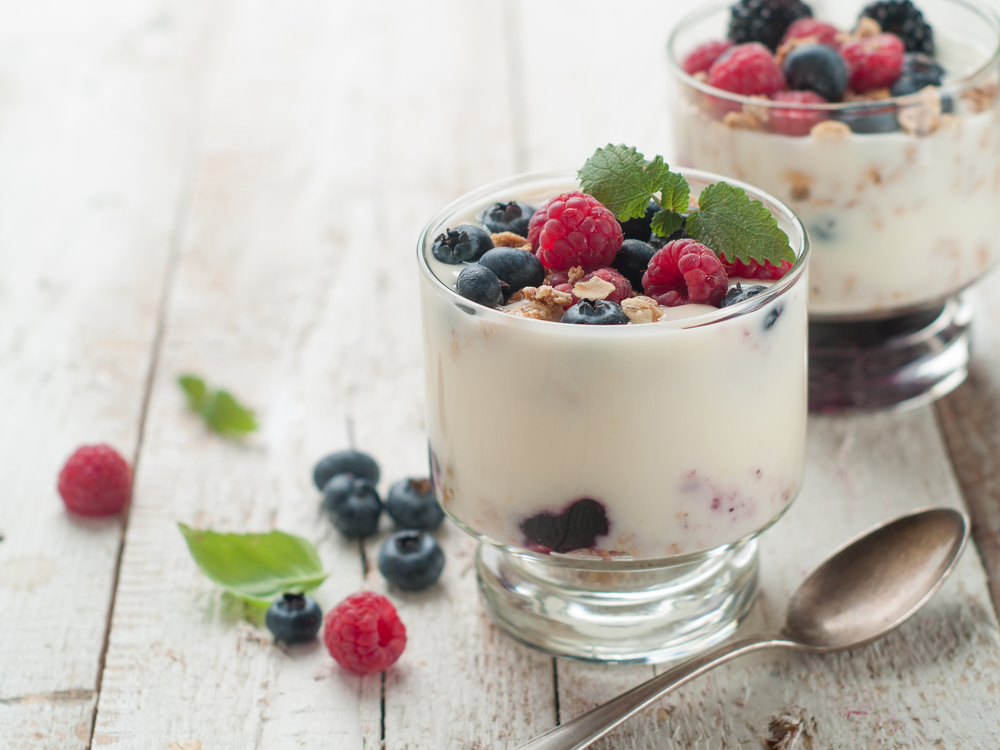
6. Snack on yogurt. Yogurt is a good source of gut-friendly probiotics. New research shows that the bacteria in our gut impact our health like we never knew before. Gut bacteria act as the first line of defense for our immune system, help to digest the fiber in our food and create healthy molecules for our body to use. Having abundant and diverse gut bacteria is linked to better health outcomes and even improved mood status in adults. The probiotics in yogurt help to replenish and grow these helpful bacteria in your colon. Not all yogurts are the same, though. Look for a yogurt that lists specific probiotic strains on the label and a variety that is higher in protein and low in added sugar.
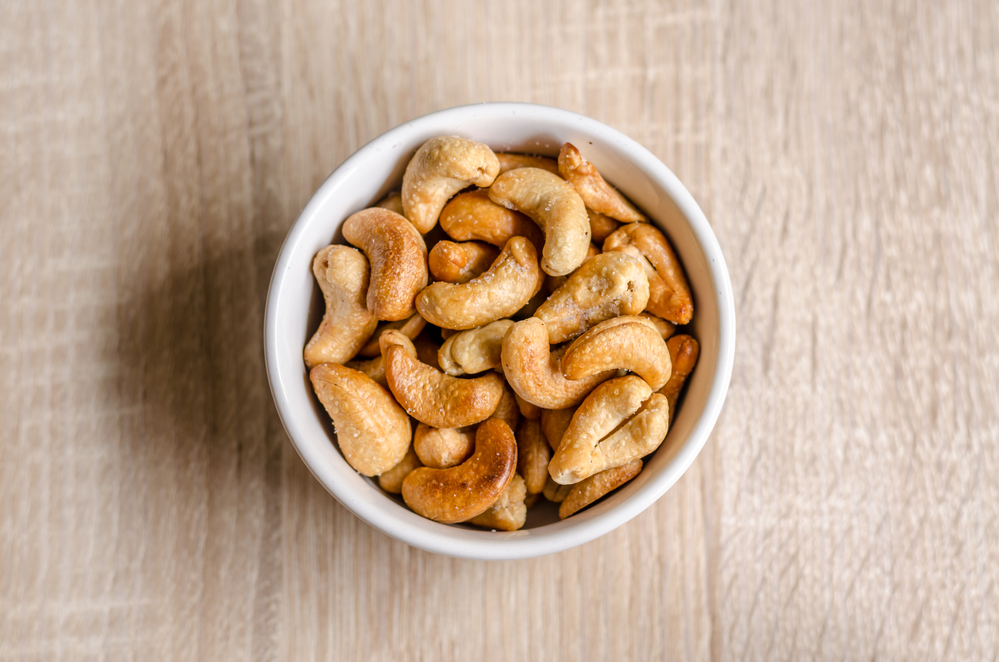
7. Have a serving of nuts or seeds during the day. A handful of nuts is more than just a crunchy and delicious snack. Nuts and seeds contain many important nutrients such as omega-3 fats, fiber, vitamin E, and plant sterols which help to reduce cholesterol. This combination of nutrients and protein help to keep you full and sustained in between meals, making them a healthy and balanced snack. Choose low-sodium varieties, and sprinkle on top of salads, smoothies, or oatmeal!
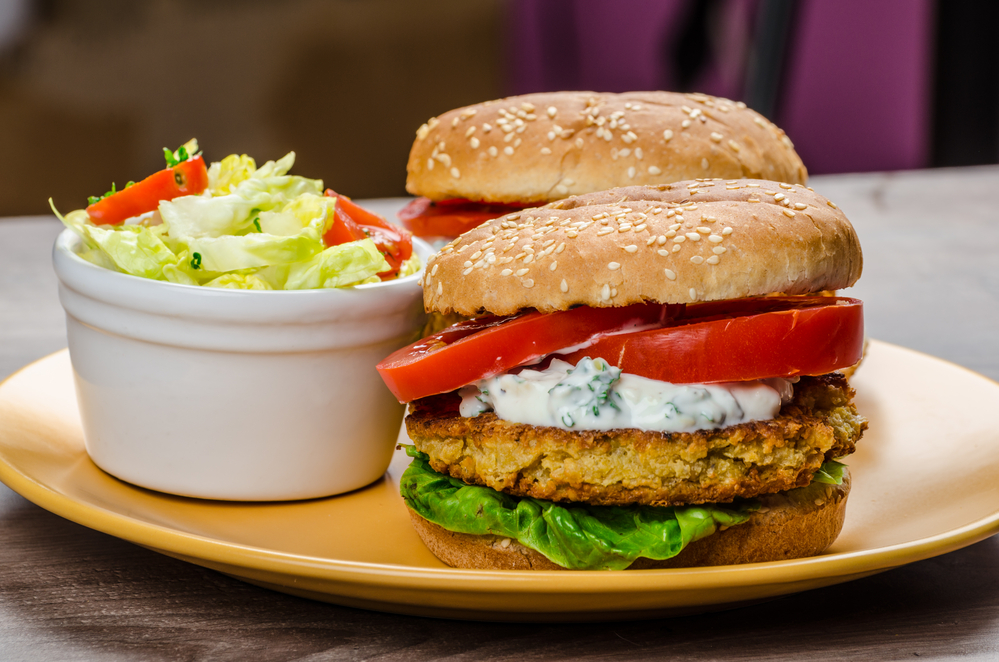 8. Try meatless Monday. Going meatless once weekly helps to increase plant foods in the diet, such as beans, legumes, whole grains, and vegetables. Focusing on these foods even one day a week can help develop healthier habits over the year. Additionally, meals made with beans and legumes instead of meat are not only more environmentally friendly, but can also be much cheaper than their meat counterparts, making it a healthy swap for your health, the planet, and your wallet! Check out the Poe website for some delicious meatless meals!
8. Try meatless Monday. Going meatless once weekly helps to increase plant foods in the diet, such as beans, legumes, whole grains, and vegetables. Focusing on these foods even one day a week can help develop healthier habits over the year. Additionally, meals made with beans and legumes instead of meat are not only more environmentally friendly, but can also be much cheaper than their meat counterparts, making it a healthy swap for your health, the planet, and your wallet! Check out the Poe website for some delicious meatless meals!
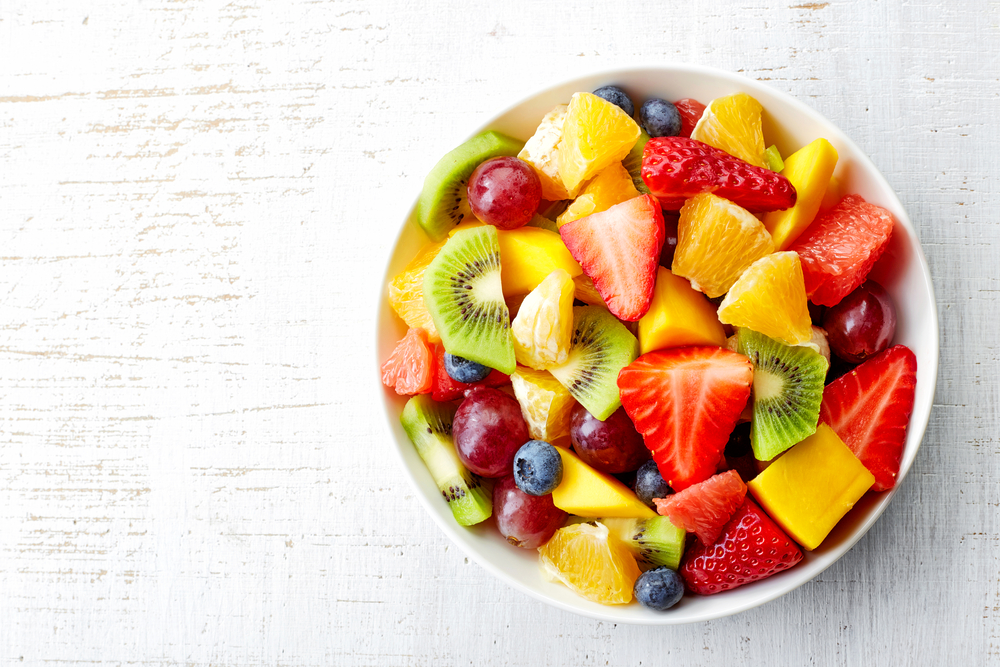 9. Eat a rainbow of fruits and veggies during the week. Research shows that, although people in the US are consuming more fruits and vegetables compared to previous years, the variety among types is low. Fruits and veggies contain powerful molecules called phytochemicals that contribute to the rich color in plants and have incredible health benefits to the body. These phytochemicals include lycopene in red foods which helps reduce the risk of heart disease, chlorophyllin in green foods which helps to reduce the risk of cancer, beta-carotene in orange foods which helps reduce cell damage, and anthocyanins in purple foods which helps with memory and cognitive performance. Eating fresh fruits and vegetables from each color group during the week ensures that you are getting the full variety of phytochemicals and antioxidants to keep your body healthy year-round.
9. Eat a rainbow of fruits and veggies during the week. Research shows that, although people in the US are consuming more fruits and vegetables compared to previous years, the variety among types is low. Fruits and veggies contain powerful molecules called phytochemicals that contribute to the rich color in plants and have incredible health benefits to the body. These phytochemicals include lycopene in red foods which helps reduce the risk of heart disease, chlorophyllin in green foods which helps to reduce the risk of cancer, beta-carotene in orange foods which helps reduce cell damage, and anthocyanins in purple foods which helps with memory and cognitive performance. Eating fresh fruits and vegetables from each color group during the week ensures that you are getting the full variety of phytochemicals and antioxidants to keep your body healthy year-round.
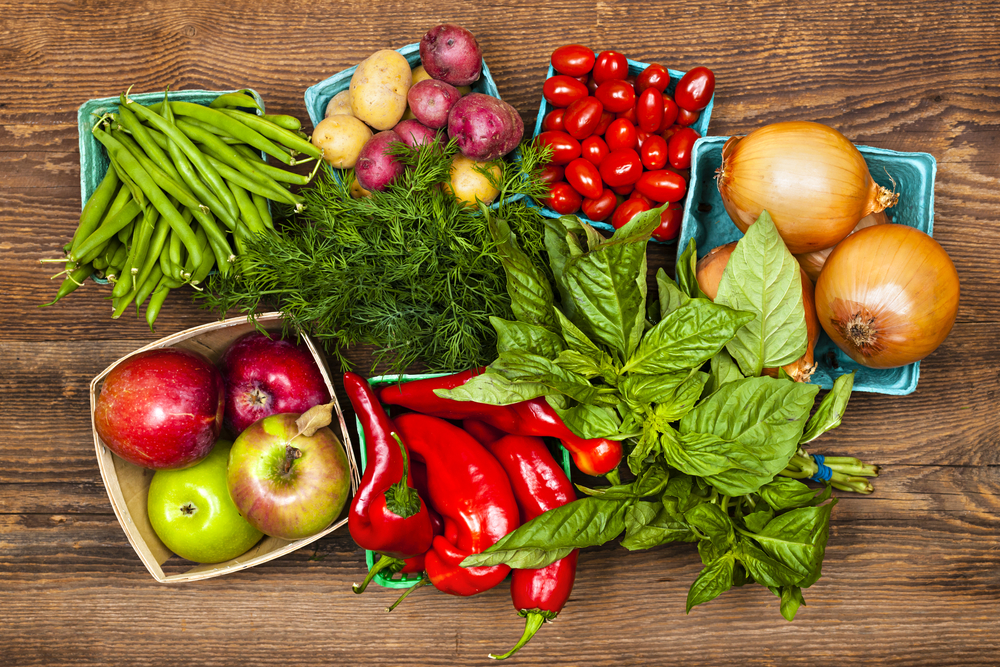 10. Think twice about taking a supplement. The nutrients that our bodies need are best absorbed when we eat real food. Taking high levels of specific supplements can be expensive and ineffective for your health. Overall, it is recommended to get vitamins and minerals through real food, and an overall healthy and balanced diet is the best way to stay healthy, rather than just focusing on getting large amounts of one nutrient in particular. Always consult a doctor before starting any supplement regimen.
10. Think twice about taking a supplement. The nutrients that our bodies need are best absorbed when we eat real food. Taking high levels of specific supplements can be expensive and ineffective for your health. Overall, it is recommended to get vitamins and minerals through real food, and an overall healthy and balanced diet is the best way to stay healthy, rather than just focusing on getting large amounts of one nutrient in particular. Always consult a doctor before starting any supplement regimen.
Resources:
Olive Oil May Lower Heart Disease Risk.
American Cancer Society Guideline for Diet and Physical Activity
Featured Poe Resource: #PoeFit

Need a little daily motivation to stay fit? Follow #PoeFit on Twitter for the latest tips, insights, and information on keeping fit and maintaining a healthy household.
These are fun and simple things you can do at home without a lot of special equipment, with participation from the whole family! Each week, the Poe Center posts a helpful series of tweets dedicated to nutrition, physical activity, or gardening.
Check it out here, or follow us on Twitter.
Featured Poe Program: Poe’s Cooking with MyPlate Challenge
Participants: Ages 10 – Adult.
Program Length: 2 hours
Participants work together in the kitchen to compete in a food-preparation challenge. Healthy cooking strategies are introduced, as well as reviewing MyPlate, reading a nutrition facts label, and practicing basic kitchen safety. Recipe choices include stir fry, turkey tacos, pizza with whole grain crust, and frittatas.
Programs can be presented online and is great for youth and family groups to participate from home. Call (919) 231-4006 for details.
